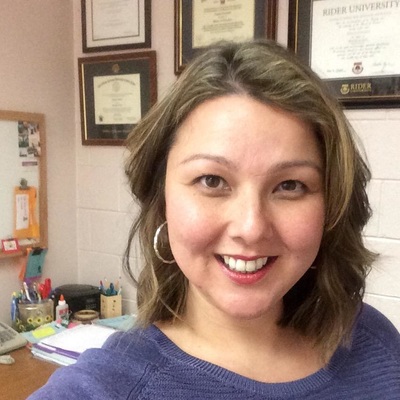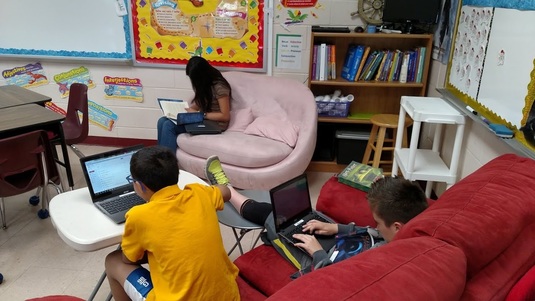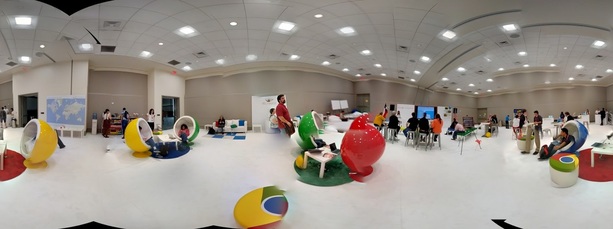5 Ways to Elevate Your Educational Setting and Prepare Students for the Real World The following guest blog post was written by Angela Cleveland & Saqi Mehta. What comes to mind when you picture a classroom? Desks in rows? A teacher at the front of the room? If so, you might be surprised to discover that learning has shifted from a static, one-dimensional model to a more dynamic, openly collaborative setting. This new educational environment reflects current trends in technology and education, and it mirrors the workplace students will be entering. Many companies are adapting their physical working environment and collaborative strategies to make the most of the advances in technology and the generational shift of millennials entering the workforce. The top five adaptations listed below are occurring in both schools and workplaces. They may seem small, but they have a tremendous impact on transforming the classroom and the modern workplace. As Abraham Lincoln said, “The philosophy of the school room in one generation will be the philosophy of government in the next.” 1. Physical Environment - The skills we emphasize in K-12 should mirror the workplace students will be entering. For example, the idea that learning can only take place in a classroom while sitting at a desk is antiquated. Technology and teaching using a “flipped classroom” has transformed education. No longer is learning limited to the start and end of the school day. For example, students are reviewing teacher-made videos and online assignments in preparation for discussion and a hands-on learning experience in class. The idea that work can be done outside of the confines of a desk is reflected in the workforce as it is increasingly commonplace to telecommute. The idea that “work” takes place in a 9-5 environment at a desk is changing. In schools and in the workplace, it is the productive outcome that matters more than the physical location of “work” or designated time frame in which to complete it. When viewing the modern school and workplace, it is clearly evident that a variety of learning/working styles are considered. Couches, standing desks, and traditional desks are now viewed as not only acceptable but lauded as individuals consider the physical environment that is most productive for them. 2. Collaboration - While it used to be that in classroom groups and in work teams, the collaborative work took place around a table with all parties physically present. Now collaboration can take place on a global scale with colleagues/other students around the world. Google Docs, Hangouts, Skype, even LinkedIn is a tool to connect with others on a local and global scale. Even when colleagues get together to collaborate, a set location with everyone sitting around a table is quickly becoming out of fashion. Now, “walk and talks” are more common, and there is a school of thought that the great ideas aren’t necessarily generated from everyone sitting in a room together. While walking or playing a game, innovative ideas can emerge naturally. 3. Transparency/sharing. Schools used to emphasize that being a good digital citizen meant keeping everything one shares on social media private. Now, however, one’s online presence can be an asset when applying to college, looking for a job, or professionally connecting with others. Your digital footprint is like credit; having a bad credit history or no credit history does not bode well for your reputation. Having a transparent digital presence gives people a sense of who you are, what you are passionate about, and that you have nothing to hide. That’s not to say that every social networking account should be public, but a good rule of thumb for public posts is that if you are okay with it being on the front page of a newspaper or on a billboard, then it’s more likely to be fine. Another great rule of thumb is “When in doubt, don’t.” If you are wavering on a post or topic, it’s best to hold off until you are truly comfortable. Overall, it’s important to keep in mind that the positive connections that both students and employees can make by collaborating and sharing ideas in an open forum can be invaluable. Keeping everything private or not participating in social media at all denies you the opportunity to create these connections. 4. Innovation/entrepreneurship. Being an innovator, and even starting a business, can begin at any age. A perfect example is Vivian Herr, who founded Make a Stand at 12-years-old in an effort to abolish child slavery. Talk with students about a problem they want to solve in the world. No matter how big or small, there will be someone else out there who is looking to solve the same problem. This skill crosses over to the workplace as employers are increasingly looking for candidates who are assertive enough to identify problems in a company, have the ability to advocate change, and are passionate about following through. Schools can nurture these skills by hosting a standing speaker series, which can open up a world of possibilities to students about the width and breadth careers can take. If you can’t get people physically to your class consider showing TED talks. There are great talks geared specifically toward kids! 5. Have fun while living your passion. Rote memorization is not only antiquated but unnecessary as we have immediate access to information at our fingertips via smartphones. Schools are moving to more project-based learning, recognizing that if the learning is fun and meaningful, it is more salient. A deeper understanding of concepts has replaced memorization. Students are encouraged to explore why an answer is correct rather than simply being satisfied with getting an answer right. Employers are looking for these skills in candidates. A “book-smart” employee who lacks critical thinking skills won’t be able to take the company to the next level. As Martin Luther King, Jr. said, “The function of education is to teach one to think intensively and to think critically.” The goal is not to memorize and regurgitate facts. When you love what you do then there are ways to teach that working can be enjoyable. Have whiteboards to (literally) draw inspiration. Host “fireside chats” with a picture of a fireplace with chairs set up around them. Keep common areas open and clean to encourage collaboration. Put questions on posters around the room to elicit thought, such as: “What would you do if you weren’t afraid?” What would you do if you were able to take your classroom to the next level? Take some time to think about this. Create a “hack week” project for yourself and/or even include your students! It can be fun: once they are invested, they will feel direct ownership into making their classroom a space to learn, collaborate, and work off of each others’ energy. Angela Cleveland is a school counselor at Hillsborough Township Public Schools in Hillsborough, New Jersey. She is a Google Certified Educator who advocates for using technology to enhance students’ learning experiences, the teaching profession, and online professional collaboration opportunities. For more information, Angela Cleveland can be reached at [email protected].
Saqi Mehta is a trained Career Counselor who is passionate about all aspects of career development, and has worked with college students @MIT & Harvard Business School. She is currently the University Recruiting Lead @Square. For more information, Saqi can be reached at [email protected].
0 Comments
Leave a Reply. |
Archives
May 2020
Categories
All
|




 RSS Feed
RSS Feed
